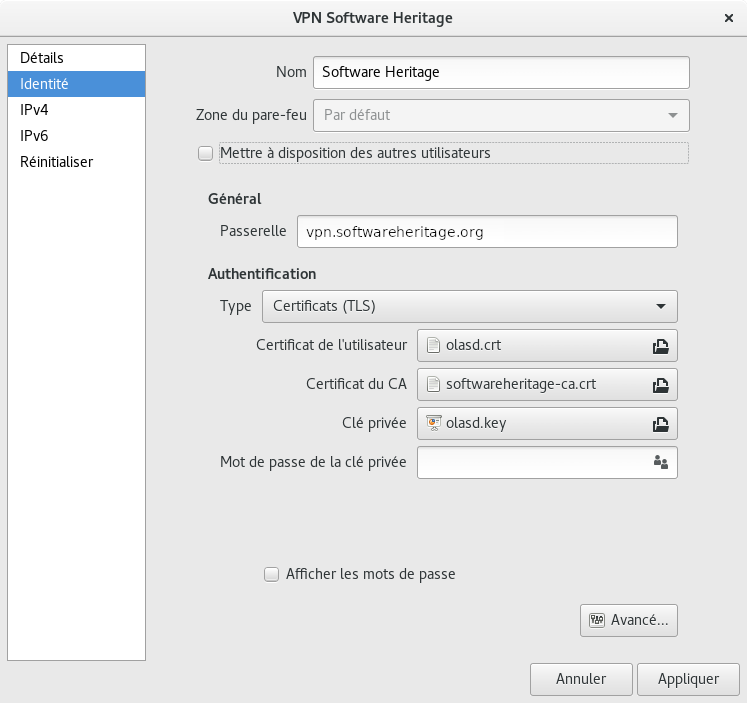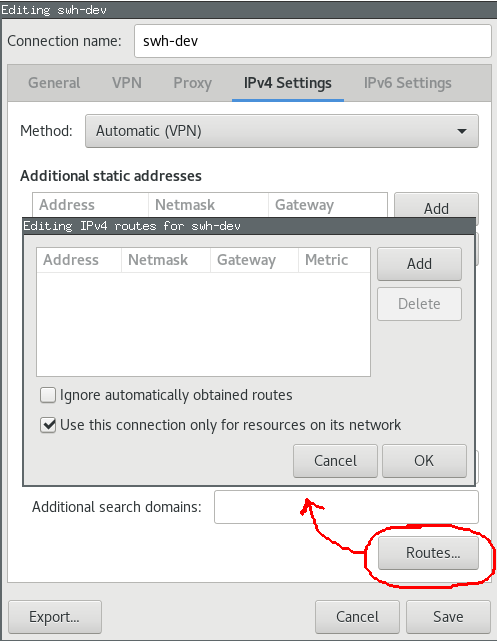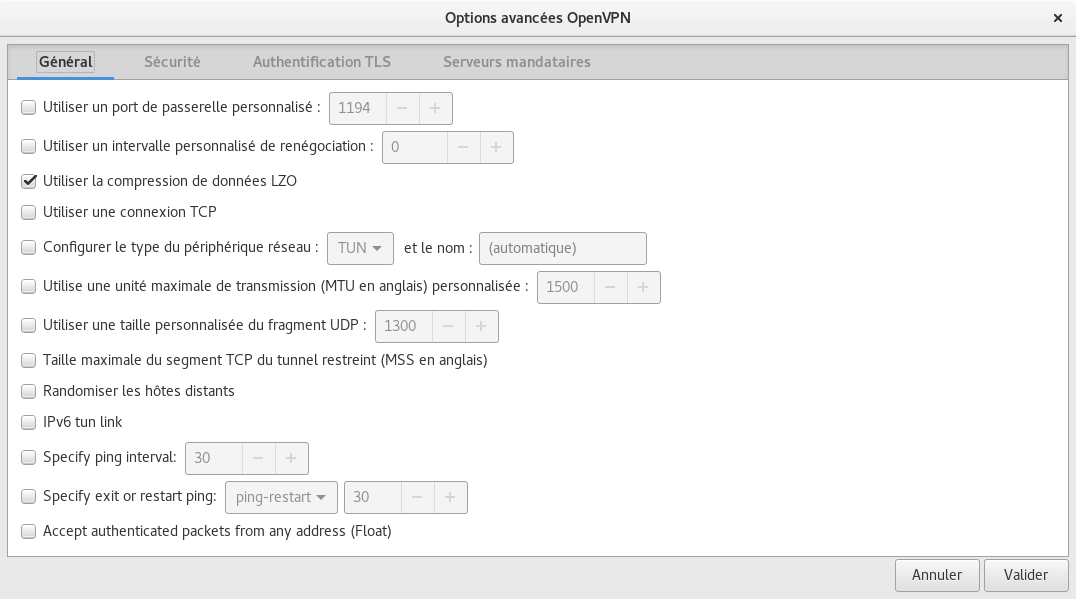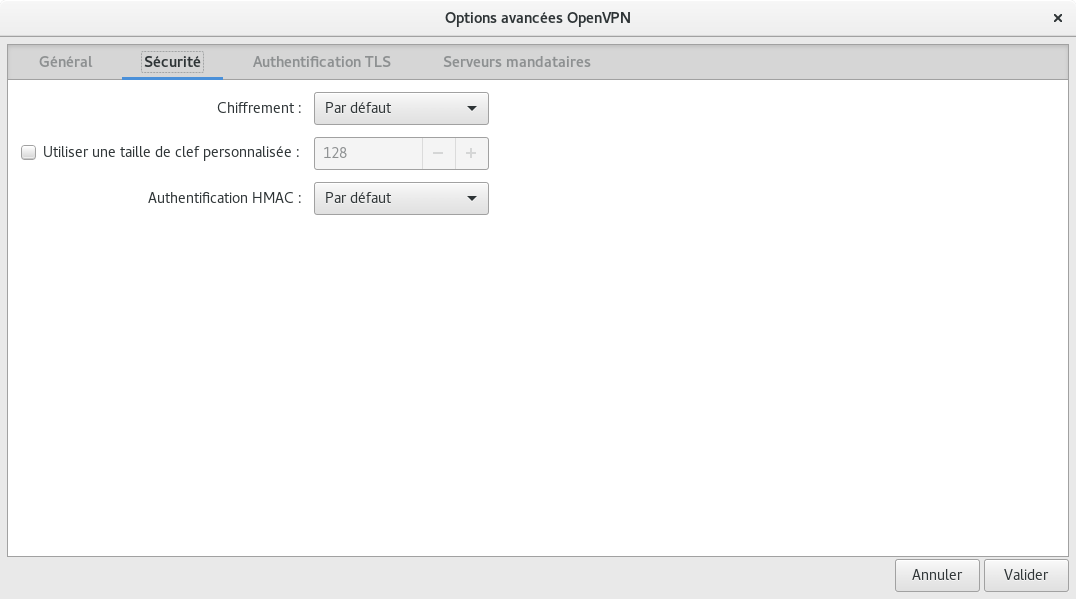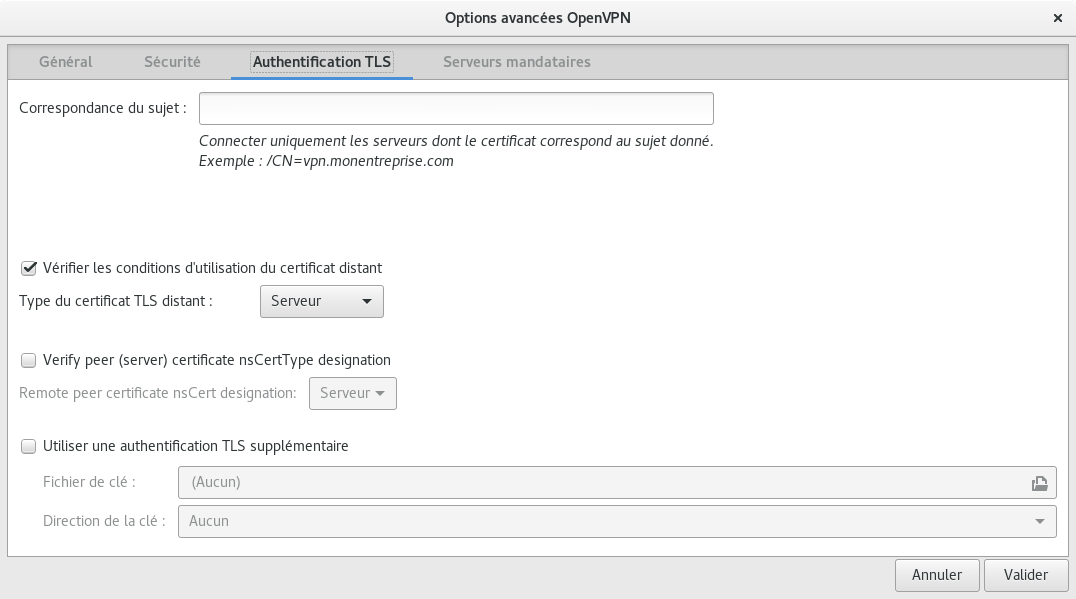VPN
The Software Heritage server and the VMs running on it are severely firewalled. To get onto their network unrestricted, a VPN based on OpenVPN is available.
The setup is client-server, with per-client certificates.
OpenVPN client configuration
Raw OpenVPN
Sample configuration file, e.g., /etc/openvpn/softwareheritage.conf:
remote louvre.softwareheritage.org ns-cert-type server comp-lzo nobind dev tun proto udp port 1194 log /var/log/openvpn.log up-restart persist-key persist-tun client ca /etc/openvpn/keys/softwareheritage-ca.crt cert /etc/openvpn/keys/softwareheritage.crt key /etc/openvpn/keys/softwareheritage.key user nobody group nogroup # If you are using resolvconf, add this: # Make sure you add louvre to /etc/hosts to avoid issues in using the vpn-provided DNS server. script-security 2 up /etc/openvpn/update-resolv-conf down /etc/openvpn/update-resolv-conf # If you want the connection to persist when your network fails, add this: ping-restart 10
In addition to the above configuration file, you will need to install the following 3 files under /etc/openvpn/keys:
- softwareheritage-ca.crt: public certificate for the Software Heritage certification authority (CA)
- softwareheritage.crt: public, client-specific certificate (see below)
- softwareheritage.key: private, client-specific key (see below)
Network Manager GUI
You need network-manager-openvpn and network-manager-openvpn-gnome for the configuration gui.
Obtaining a client certificate
For users
Ask an admin to produce a pair of client-specific certificate/key for you.
Please ensure there is a way to send you the certificate and the key securely (e.g., GPG).
For admins
On louvre:
root@louvre:~# cd /etc/openvpn/keys root@louvre:/etc/openvpn/keys# ./easyrsa build-client-full USERNAME nopass
At the end of the process certificate and key will be in /etc/openvpn/keys/pki/issued/USERNAME.crt and /etc/openvpn/keys/pki/private/USERNAME.key. Send them to USERNAME (securely).
Add the DNS entry for the new host to hiera and do a puppet run on pergamon.
Revoking a client certificate
On louvre:
root@louvre:~# cd /etc/openvpn/keys root@louvre:/etc/openvpn/keys# ./easyrsa revoke USERNAME [ say yes ] root@louvre:/etc/openvpn/keys# ./easyrsa gen-crl; chmod a+r pki/crl.pem
OpenVPN re-reads the CRL at each connection (which is why we need the CRL to be world-readable), so once the cert is revoked, there's nothing more to do. If you want to make sure the client is disconnected, you need to restart OpenVPN (which will make all clients reconnect).
/etc/hosts entries
Once the Vpn is setup on your machine, you can access Software Heritage hosts via their private IP addresses; see Network configuration.
OpenVPN now pushes the address of our DNS server (192.168.100.29, pergamon).
You might want to add louvre.softwareheritage.org in your /etc/hosts to avoid a bootstrap problem if the "on-vpn" DNS server is in your resolv.conf.
